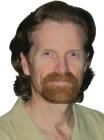Latest News
September 7, 2007
By Jonathan Gourlay
 I have this dream that someday soon I’ll be working in a word-processing program with underlying intelligence that does better than try to correct odd spellings of trademarked names. It goes something like this.
I have this dream that someday soon I’ll be working in a word-processing program with underlying intelligence that does better than try to correct odd spellings of trademarked names. It goes something like this.
I’m working on an article that evokes Peter Cooper’s transformation of train rails to steel I-beams. I write that the first use of the new building material was to be in his Great Hall at New York’s Cooper Union, where, in 1859, the new stage hosted a lanky lawyer from Illinois who went on to become, quite probably, our greatest president.
The software automatically highlights “1859” and a text box appears with corrected script: Abraham Lincoln delivered his “Right Makes Might” speech from the Great Hall podium on Feb. 27, 1860, assuring him the presidency.
> Open architecture and greater processing will lead to elegant collaboration
It’s no great leap to declare that a typical engineer’s job has expanded to encompass a whole aerospace firm’s slew of specialties. As software developers optimize programs to solve problems considered immense only a decade ago, these optimized solutions are being combined with other programs to handle all manner of simulations. And as the computing power available to designers and analysts has increased exponentially, time is compressed. What took four days on four CPUs is now being accomplished more elegantly on 128 CPUs in just three hours.
Where does it end? Will the designer really be freed up enough to “innovate?” Is this going to happen when your punchlist includes every possible engineering task from concept to manufacturing?
Almost. You are about to turn a corner. Open architecture and solutions optimized for greater processing can lead to simultaneous massive-assembly multiphysics, which leads to elegant collaboration and the development of truly adaptive best practices. These best practices will then be updated on a regular basis and fed into a program that will work in your favorite MCAD environment surreptitiously and automatically.
It’ll be like having a virtual Peter Cooper continuously looking over your shoulder (or working under your desktop) as you design your next assembly. As you design, analysis occurs in the background, pointing out where you can save material by changing the thickness of a wall that falls well within FEA constraints. Or a text box pops up suggesting changing the angle of an intake manifold for three percent better air and fuel mixing.
Think of it. Technology will allow design engineers to once again become design engineers, analysis engineers to become analysis engineers, and innovators to truly innovate.
Jonathan Gourlay is the features editor of DE. You can send comments about this subject to mailto:Editorsmailto:[email protected].
Subscribe to our FREE magazine, FREE email newsletters or both!
Latest News
About the Author
DE’s editors contribute news and new product announcements to Digital Engineering.
Press releases may be sent to them via [email protected].






